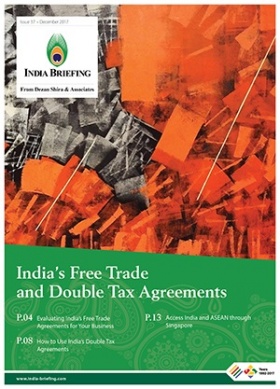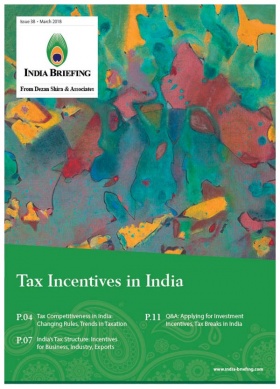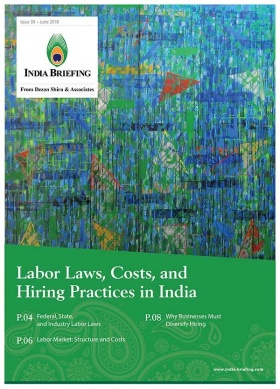EAEU-India Free Trade Zone: Initial negotiations eye improved access to new markets
 The Eurasian Economic Union (EAEU) is a political and economic union of five states located in central and northern Eurasia – Armenia, Belarus, Kazakhstan, Kyrgyzstan, and Russia.
The Eurasian Economic Union (EAEU) is a political and economic union of five states located in central and northern Eurasia – Armenia, Belarus, Kazakhstan, Kyrgyzstan, and Russia.
Having established an integrated single market, the EAEU has a GDP of US$4 trillion and covers a population of about 183 million people.
The EAEU facilitates the free movement of goods, capital, services, and people among its member countries. It also directs common policies in the macroeconomic sphere: transport, industry, agriculture, energy, foreign trade and investment, customs, technical regulation, and competition and antitrust regulation.
Given India’s surging economic growth and huge market size, the EAEU is keen to negotiate a free trade arrangement. Meanwhile, India is also interested in tapping into new markets and accessing the technology capabilities of EAEU countries.
Free trade zone between EAEU and India
Preparatory consultations on a possible EAEU-India free trade zone (FTZ) were held in January 2018 in anticipation of official negotiations commencing between the EAEU and India.
Prior to this, a joint research group submitted its analysis in 2016, approving the substantial trade potential and economic gains of an EAEU-India FTZ.
Both parties are currently working out key aspects of what the FTZ will look like, as well as technical and organizational concerns, information on regulatory systems, and data sourcing and management.
Once these issues get sorted, the two sides will begin framing the text of an FTZ agreement.
Negotiators on both sides are looking to assess the following:
- Reduction of tariff and non-tariff barriers;
- Choosing goods on which tariffs will be eliminated immediately; and
- Fixing the transitional periods for those tariff reductions that will be achieved in a phased manner.
EAEU-India trade potential
The biggest draw for EAEU member countries is the size and scope of India’s market, and the fact that it remains under-tapped by these countries.
Trade revenue between the EAEU and India could grow by 30 to 40 percent through effective tariff liberalization.
Expert evaluations are quite ambitious: the EAEU’s GDP could increase by US$1.4 billion in the short-term to US$2.7 billion in the long-term while India’s GDP could register a three-percentage point increase.
EAEU countries can supply a diverse range of products in the following sectors:
- Agriculture – Grains, oils, vegetables, drinks, including water, among others.
- Industry – Fertilizers, machinery and equipment, vehicles, mechanical engineering products, salt, chemicals, rubber, plastics, steel, and wood products.
India’s potential exports include agricultural, food, and textile products, chemicals, and pharmaceuticals, among others.
India is particularly interested in the EAEU’s capacity in aircraft engineering, shipbuilding, metallurgical engineering, chemical industry, and urban planning, architecture, and development.
As India looks to expand its manufacturing capacity, access to global supply chains will be key.
Further, the national program to build 100 smart cities will also benefit from the advanced technological expertise of the EAEU’s member countries.
Currently, India is only in the top 20 major trade partners of the EAEU – 18th in terms of imports and 15th in terms of exports. Their trade turnover in 2016 was US$8.8 billion, and increased by 23 percent to US$10.8 billion in 2017.
In 2017, EAEU exports to India included the following:
- Crude oil (21.8 percent);
- Mineral and chemical fertilizers (5.8 percent);
- Hard coal (3.4 percent);
- Paper (2.7 percent);
- Petroleum products (2.5 percent);
- Turbojet engines (2.5 percent); and,
- Industrial or laboratory equipment (2.1 percent).
In 2017, India’s exports to the EAEU included:
- Pharmaceuticals (20.7 percent);
- Mechanical equipment (8.1 percent);
- Organic chemical compounds (6.4 percent);
- Tea and coffee (5.7 percent); and,
- Electrical equipment (4.3 percent).
The EAEU’s top export partners in 2017 were: China (11.71 percent), Netherlands (10.75 percent), Germany (7.09 percent), Italy (5.86 percent), Turkey (5.08 percent), South Korea (3.5 percent), and Poland (3.43 percent).
Main importers to the EAEU were: China (23.23 percent), Germany (11.21 percent), US (5.83 percent), Italy (4.83 percent), France (4.27 percent), Japan (3.40 percent), and South Korea (3.11 percent).
About Us
India Briefing is produced by Dezan Shira & Associates. The firm assists foreign investors throughout Asia and maintains offices in China, Hong Kong, Indonesia, Singapore, Vietnam, and Russia.
Please contact india@dezshira.com or visit our website at www.dezshira.com.
- Previous Article India’s Mega Port Development Project ‘Sagarmala’: An Explainer for Investors
- Next Article RCEP Members Agree to Liberalize Services Market, Other Concessions for India












